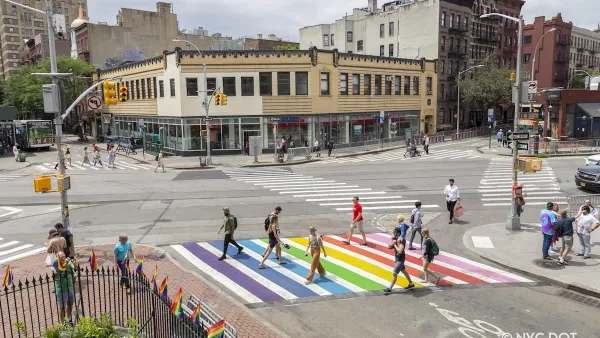Wes Marshall and Norman Garrick, after a study of data from 130,000 car crashes in California, have determined that cities built since since 1950 have more dangerous roads than those built before 1950.
"The newer cities tend to have more "dendritic" networks - branching, tree-like organizations that include many cul-de-sacs, limiting the movement of traffic through residential areas. They also don't have as many intersections. The pre-1950 cities, on the other hand, tend to be more grid-like, giving motorists many more routes to choose from.
For several decades, traffic specialists believed a tree-like hierarchy of streets was superior because it made residential neighborhoods quieter and presumably safer. But an American Society of Civil Engineers (ASCE) study cited by the UConn researchers points out that more-connected street networks tend to reduce travel speeds. That's important because even a small reduction in speed can boost safety - mainly by reducing the severity of the accidents.
A recent report from Europe found that when average vehicle speeds drop by just 5 percent, the number of injuries drops by 10 percent and the number of fatalities falls 20 percent. Extensively connected street networks may not have fewer crashes over all, but the crashes that occur are less likely to leave someone dead."
FULL STORY: Key to safer roads is identified in California study

Planetizen Federal Action Tracker
A weekly monitor of how Trump’s orders and actions are impacting planners and planning in America.

Chicago’s Ghost Rails
Just beneath the surface of the modern city lie the remnants of its expansive early 20th-century streetcar system.

Amtrak Cutting Jobs, Funding to High-Speed Rail
The agency plans to cut 10 percent of its workforce and has confirmed it will not fund new high-speed rail projects.

Ohio Forces Data Centers to Prepay for Power
Utilities are calling on states to hold data center operators responsible for new energy demands to prevent leaving consumers on the hook for their bills.

MARTA CEO Steps Down Amid Citizenship Concerns
MARTA’s board announced Thursday that its chief, who is from Canada, is resigning due to questions about his immigration status.

Silicon Valley ‘Bike Superhighway’ Awarded $14M State Grant
A Caltrans grant brings the 10-mile Central Bikeway project connecting Santa Clara and East San Jose closer to fruition.
Urban Design for Planners 1: Software Tools
This six-course series explores essential urban design concepts using open source software and equips planners with the tools they need to participate fully in the urban design process.
Planning for Universal Design
Learn the tools for implementing Universal Design in planning regulations.
Caltrans
City of Fort Worth
Mpact (founded as Rail~Volution)
City of Camden Redevelopment Agency
City of Astoria
City of Portland
City of Laramie





























